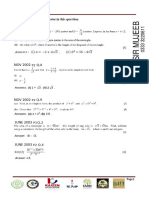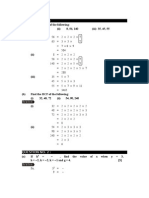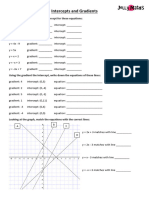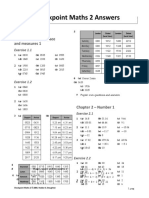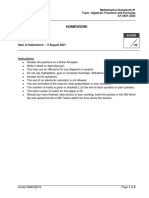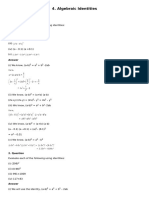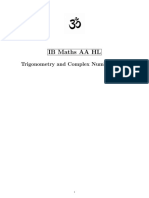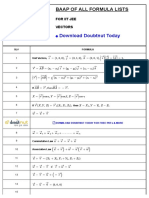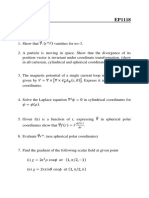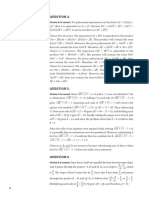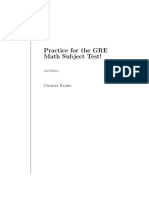Cubic Sequences - Difference Method https://www.radfordmathematics.com/algebra/sequen...
u2 = 23 + 2 × 22 − 3 × 2 + 4
=8+2×4−6+4
=8+8−6+4
u2 = 14
We learn how to find the formula for the nth term below.
Method - Finding the formula for the nth
term
Given the first few terms of a cubic sequence, we find its formula
un = an3 + bn2 + cn + d
using the following four equations:
⎧
⎪ 6a = third difference
⎪
12a + 2b = 1st second difference
⎨
⎪
⎩
⎪
7a + 3b + c = difference between the first two terms
a + b + c + d = first term
This provides us with four equations, which we solve from top to bottom, to find
each of the four unknown coefficients a, b, c and d.
The four equations, stated above, can be a little confusing so we illustrate it here here
with an example.
Consider the sequence whose first few terms are:
4, 14, 40, 88, 164, …
The following illustration shows where each of the four equations, stated above, fits
in.:
We can see that the values that we use, the ones we've boxed in the illustration, are
always the first on each row.
We therefore have four equations to solve:
3 of 6 5/7/24, 20:59
�Cubic Sequences - Difference Method https://www.radfordmathematics.com/algebra/sequen...
⎧ 6a = 6
⎪
⎪
12a + 2b = 16
⎨
⎪
⎩
⎪
7a + 3b + c = 10
a+b+c+d=4
We solve these working from top to bottom. Each time we move-on to solve a new
equation we substitute the value we just found in the previous equations:
• equation 1:
We start with the first (top) equation:
6a = 6
6
a=
6
a=1
Now that we know the value of a, a = 1, we move-on to the second equation.
• equation 2:
We have to solve 12a + 2b = 16. Now that we know that a = 1 this becomes:
12 × 1 + 2b = 16
12 + 2b = 16
2b = 16 − 12
2b = 4
4
b=
2
b=2
Now that we know the value of b, b = 2, we move-on to the third equation.
• equation 3:
We have to solve 7a + 3b + c = 10. Since we know that a = 1 and b = 2 this
becomes:
7 × 1 + 3 × 2 + c = 10
7 + 6 + c = 10
13 + c = 10
c = 10 − 13
c = −3
Now that we know the value of c , c = −3, we move-on to the fourth equation.
• equation 4:
We have to solve a + b + c + d = 4. Since we know that a = 1, b = 2 and c = −3
this becomes:
4 of 6 5/7/24, 20:59
�Cubic Sequences - Difference Method https://www.radfordmathematics.com/algebra/sequen...
1+2−3+d=4
3−3+d=4
d=4
Now that we know the value of d, c = 4, we can finally state the formula for the
n-th term of this cubic sequence:
un = n3 + 2n2 − 3n + 4
Exercise
Find the formula for the nth term of each of the following sequences:
1. The sequence whose first few terms are:
4, 14, 40, 88, 164, …
2. The sequence whose first few terms are:
4, 23, 66, 145, 272, …
3. The sequence whose first few terms are:
−1, 1, −5, −25, −65, …
4. The sequence whose first few terms are:
1, 14, 65, 178, 377, …
5. The sequence whose first few terms are:
11, 6, −25, −100, −237, …
Answers w/out Working
Note: this exercise can be downloaded as a worksheet to practice with:
worksheet (cubic-sequences-worksheet-1.pdf)
Scan this QR-Code with your phone/tablet and view this page on your preferred device.
5 of 6 5/7/24, 20:59















